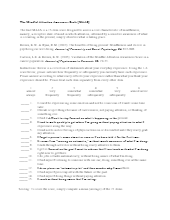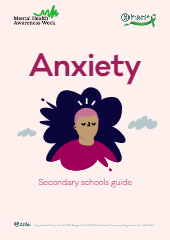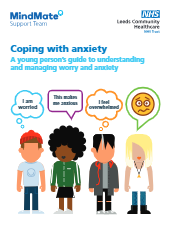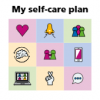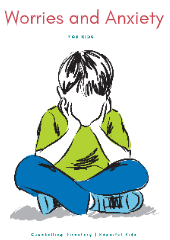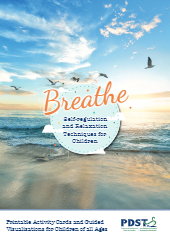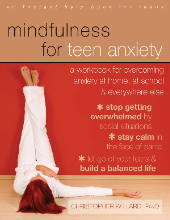 The Revised Child Anxiety and Depression Scale (RCADS) is a tool used to assess anxiety and depression in children and adolescents. It is a questionnaire that asks young people about their thoughts, feelings, and behaviors related to anxiety and depression. Professionals often find it helpful in understanding the emotional well-being of children and teenagers. The RCADS helps identify symptoms such as worry, fear, sadness, and changes in behavior. It is a valuable resource for assessing the emotional and mental health of young individuals.
The Revised Child Anxiety and Depression Scale (RCADS) is a tool used to assess anxiety and depression in children and adolescents. It is a questionnaire that asks young people about their thoughts, feelings, and behaviors related to anxiety and depression. Professionals often find it helpful in understanding the emotional well-being of children and teenagers. The RCADS helps identify symptoms such as worry, fear, sadness, and changes in behavior. It is a valuable resource for assessing the emotional and mental health of young individuals.
The scoring of the Revised Child Anxiety and Depression Scale (RCADS) and RCADS-P involves using spreadsheets or syntax provided by the developer (links are below). To calculate the “t-score,” you will need to enter the young person’s equivalent US School Grade, which is typically one grade below the UK school year. The “t-score” is derived from the raw score, which is the total score of the scale or subscale.
The interpretation of the Revised Child Anxiety and Depression Scale (RCADS) scores is based on established clinical thresholds and normative data:
- Clinical Thresholds for Overall Score: The clinical thresholds for the overall score were determined by comparing the RCADS scores with those from the Anxiety Disorders Interview Schedule for DSM-IV, child and parent versions (ADIS-IV-C/P; Silverman & Albano, 1996) by Chorpita et al. (2005). A T-score of 65 is considered to be roughly in the top 7% of scores of un-referred young people of the same age, and it’s described as “borderline clinical” by the developer. A T-score of 70 is considered to be roughly in the top 2% of scores of un-referred young people of the same age, and it’s described as the “clinical threshold” by the developer.
- Subscale Thresholds: The thresholds for subscales are set using normative data, which means they are established based on the scores of a representative sample of young people. These thresholds help in assessing specific areas of anxiety and depression symptoms.
In summary, when interpreting RCADS scores, a T-score of 65 or higher on the overall scale suggests a higher level of emotional distress, considered “borderline clinical,” and a T-score of 70 or higher is indicative of a more severe level of distress, labeled as the “clinical threshold.” Subscale thresholds are established based on normative data to assess specific symptom areas.
Scale
Subscales
- Separation anxiety disorder (Child Self-Reported)
- Separation anxiety disorder (Parent Reported)
- Social phobia (Child Self-Reported)
- Social phobia (Parent Reported)
- Generalised anxiety (Child Self-Reported)
- Generalised anxiety (Parent Reported)
- Panic disorder (Child Self-Reported)
- Panic disorder (Parent Reported)
- Obsessive-compulsive disorder (Child Self-Reported)
- Obsessive-compulsive disorder (Parent Reported)
- Low mood (major depressive disorder; Child Self-Reported)
- Low mood (major depressive disorder; Parent Reported)
RCADS Scording Progams (Microsoft Excel)
United States Norms
RCADS Child Version Scoring Program 3.3 (.xls) ![]()
RCADS-Parent Version Scoring Program 3.3 (.xls) ![]()
RCADS-25 Child Version Scoring Program 3.1 (.xls) ![]()
RCADS-25 Parent Version Scoring Program 3.1 (.xls) ![]()
SPSS Syntax for Batch Scoring (updated June 2022) ![]()
Icelandic Norms
